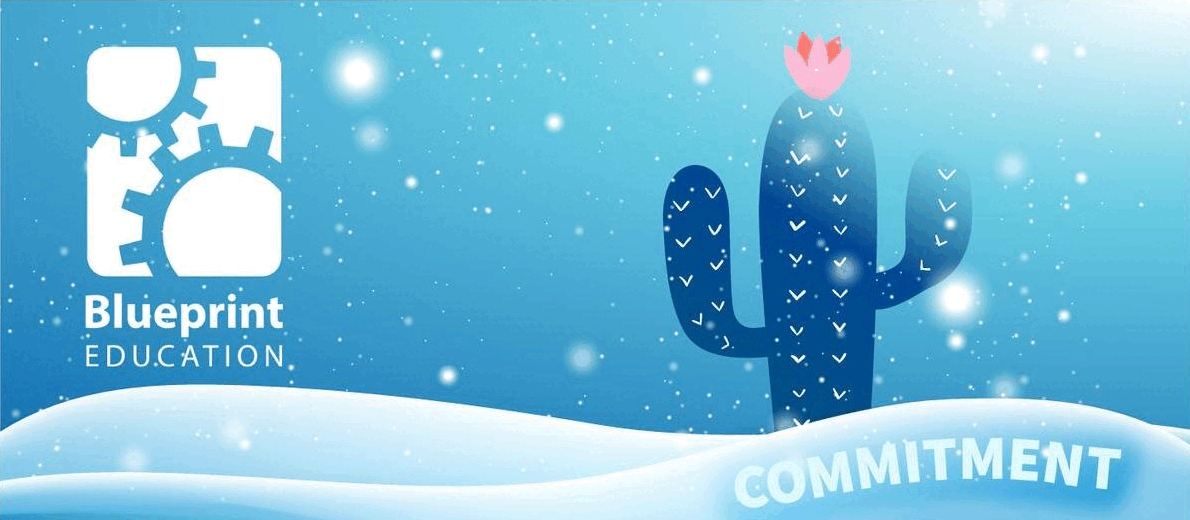Why Commitment?
In welcoming a brand new year, many of us are making commitments to ourselves: to improve, to be healthier, to act with intention, to grow in some way. Discipline and commitment to goals and each other may very well shape the upcoming year for many of us, our teams, our students.
Blueprint Education’s CEO, Mark French, shares that commitment to trust and transparency are paramount to the culture and success of any learning organization. One of the core scrum values, commitment supports effective instruction, productive team dynamic, and even successful use of agile practices, as each individual and “Team commits to achieving its goals and to supporting each other” (Schwaber & Sutherland, 2020, 4). As we collaborate within our teams to move the meter forward, we commit to our team agreements as well as our goals and the definition of done. For our students, commitment takes place throughout the process of learning and is an integral part of the Retrospective in each Learning Sprint. Students learn “the process of reflecting. . . and identifying actional commitments to improve” learning and collaboration (Scrum Alliance, 2021, 2).
Tools and Features:
The tools and features shared below represent the wisdom of Blueprint Education’s Agile leaders, Certified Agile Educators and Scrum Masters, and students. Each focuses on strategically building commitment to goals and to team collaboration, so that our students and teams can take the first steps toward championing the growth and success of 2023!
“Commitment” – Mark French, CEO Blueprint Education, Author
Team Agreement Structures for the Classroom and Beyond
Commitment RETROSPECTIVE – Rebecca Searles, Contributor
Tips, Tricks, Strategies: Building Student and Team Commitment – Sahithi Mantri & Christina Valladares, Contributors
“Student Spotlight” – Emmanuel Garcia, Contributor
Why Agile (in Education)?
The Agile framework originated from the world of software development and a need that arose to collaborate on product development in a smarter way. Agile teams work effectively as a unit and can better react to the changes that are inevitable in innovation and education (Terry, 2023). The Agile philosophy encompasses a group of methodologies that guide goal development, continuous improvement, and collaboration.
When applied to education, the Agile framework and methodologies look like: student engagement, teamwork, exploration, relevance, objective mastery, increasing depth-of-knowledge, 21st Century skills in action, self-efficacy, and intrinsic motivation.
Join us on the journey, at blueprinteducation.org/agile.
References:
- Schwaber, K., & Sutherland, J. (2020, November). The Scrum Guide [The Definitive Guide to Scrum: The Rules of the Game] [pdf].
- Scrum Alliance. (2021, June). The Agile Educator Guide [An Agile Framework for Modern Education] [pdf].
- Terry, J. (2023). Benefits of Agile Development. https://www.planview.com/resources/guide/agile-methodologies-a-beginners-guide/ benefits-of-agile-development/
Author: Marina O’Connell, MAEd, CSM, CSPO, CAL K-12
